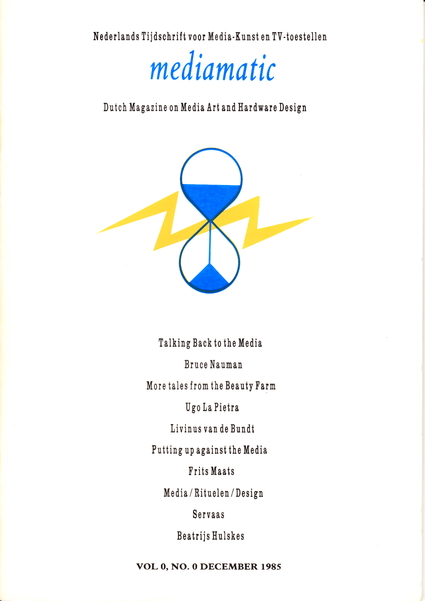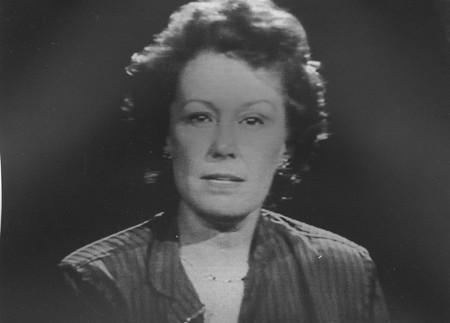In the Netherlands as well, a large number of artists use audio, video, and computers. It is even taught in art schools nowadays. Since 1982 the Kijkhuis in The Hague annually sets up a big international video festival, while the video-gallery Montevideo which existed already before that date, developed into a centre for production, exhibition, and distribution. In 1983 a Society for Video Artists came into being (Time Based Arts), which also distributes, produces, and presents video art. Museums collect and put on exhibitions of video art (e.g. The Luminous Image Amsterdam 1984). Since 1984 a nation-wide video-circuit exists. Industry and trade become conscious of their responsibilities, and provide the necessary apparatus. Within the visual arts, Media Art has developed into a more or less independent phenomenon.
The one thing that was missing so far, was a platform for discussion, a place where theorizing could be done publicly, and where this form of art could be legitimized. But also a place where undue preoccupation with certain media may be questioned, a platform that stimulates Reflection.
A Journal
We hope that Mediamatic will develop into the ideal journal.
Besides theorizing, historical, polemical, and cultural articles, and contributions by artists, you will regularly come across articles in Mediamatic that deal with the design of the apparatus used by the video artist. The television as a frame for video art, the reflection of the designer on the role of the mass media in society, compared with that of the media artist; possibly a stimulating confrontation between two different disciplines. In any case, we see a task for this journal as an intermediary between artists, institutions, the public, and art students.
Finally, we invite you not to hesitate to put forward your comments and/or suggestions. Perhaps we shall start an interesting Letters to the Editor column in the first issue.







